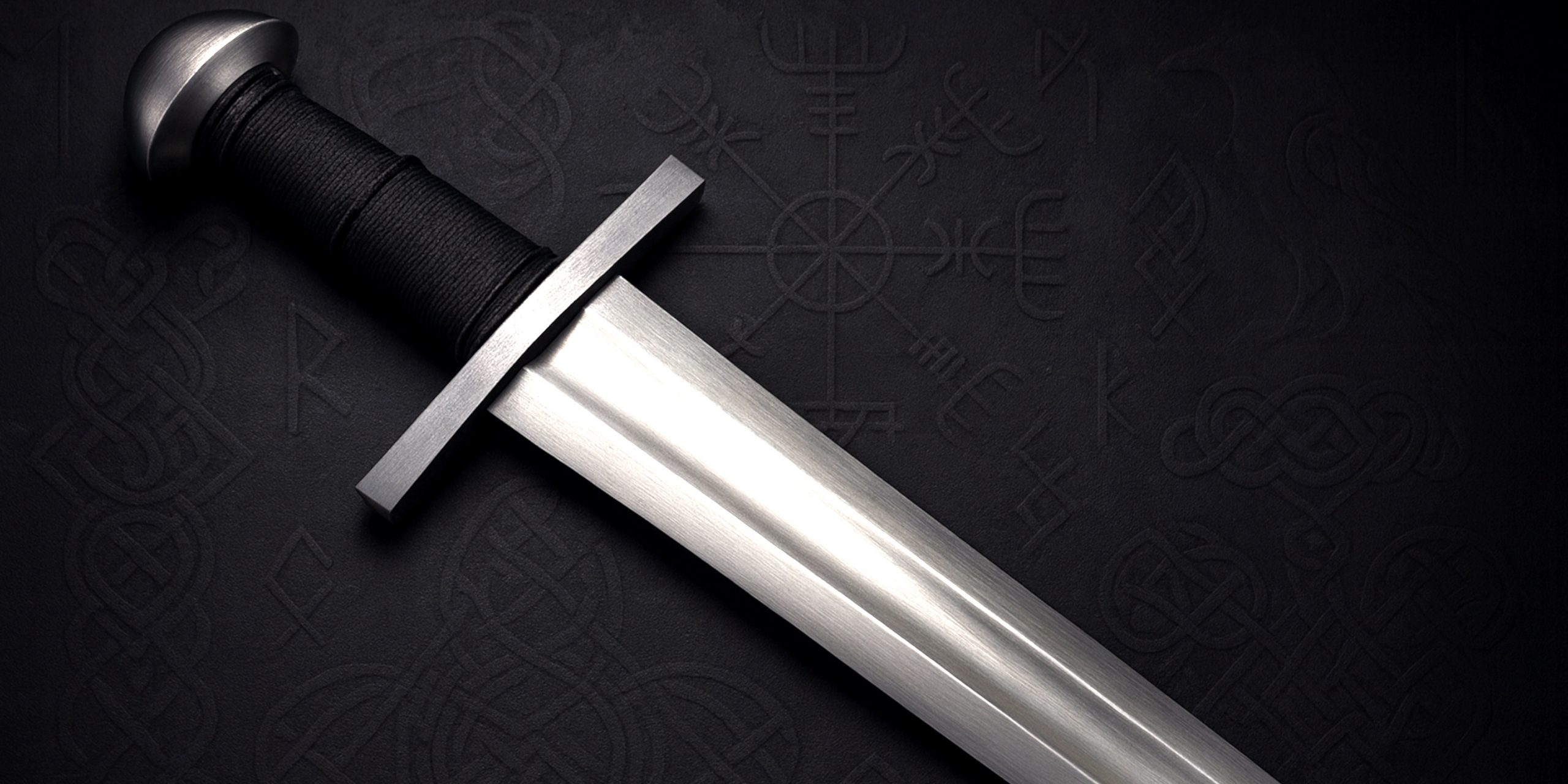
The Petersen Type X is one of the most recognisable Viking Age sword types, emerging during the late 9th to early 11th centuries. It marks a transitional phase between the earlier broad-bladed spathas of the Migration Period and the narrower medieval knightly arming swords. Often referred to as a “classic Viking sword,” Type X swords were widely used across Scandinavia and throughout Europe, reflecting the mobility of warriors, trade, and raiding networks during this time.
Specification
| Feature | Description |
|---|---|
| Blade Length | 70 to 80 cm |
| Blade Width | ~5 cm at base |
| Blade Profile | Broad, tapering slightly toward tip |
| Fullers | Wide, shallow single fuller |
| Edge Type | Double-edged |
| Crossguard | Straight, usually 8–12 cm long |
| Pommel | Brazil-nut or lobed variants |
| Grip Length | One-handed, usually under 10 cm |
| Weight | Around 1.1 to 1.4 kg |
| Balance | Centre of balance 10–15 cm from guard |
History and Evolution
The Petersen classification system, developed by Jan Petersen in 1919, categorises Viking swords into types based on hilt morphology. Type X falls late in this sequence and shows strong links to the emerging High Medieval swords. It was one of the most widespread and long-lived types.
- Origins: Likely originated around the late 9th century.
- Distribution: Found in graves and hoards throughout Scandinavia, the British Isles, and parts of Eastern Europe.
- Influence: Its design would directly influence Norman swords and later arming swords of the 11th and 12th centuries.
- Manufacture: Blades were often made of pattern-welded or later monosteel; some imported from the Rhineland (e.g., Ingelrii and Ulfberht blades).
Advantages and Disadvantages
Advantages:
- Broad blade and wide fuller made it efficient for cutting and relatively lightweight.
- Versatile in both slashing and thrusting, though optimised for cuts.
- Durable construction and improved balance over earlier types.
- Easily gripped and controlled with a single hand, allowing use with a shield.
Disadvantages:
- Short grip may be uncomfortable for users with larger hands.
- Still not ideal for thrusting into mail, compared to later tapering swords.
- The broad blade could be vulnerable at the edges if improperly tempered.
Comparison with Similar Weapons
| Feature | Petersen Type X | Petersen Type S | Oakeshott Type XI |
|---|---|---|---|
| Period | Late 9th to 11th century | Early to mid 9th century | 11th to 12th century |
| Blade Shape | Broad, slight taper | Broad, no taper | Longer and more slender |
| Fuller | Wide and shallow | Often narrower | Narrower, extends further |
| Pommel Style | Brazil-nut or lobed | Often trilobate | Often disc-shaped |
| Combat Role | Cut-focused, some thrust | Primarily cutting | Improved thrust capability |
Legacy
The Petersen Type X sword holds a central place in the historical imagination of the Viking warrior. Its widespread distribution and refined design illustrate a maturing swordsmithing tradition in early medieval Europe. The type features prominently in museum collections, re-enactment groups, and popular representations of Viking culture.
It is also one of the key links between late Viking swords and the high medieval knightly swords, making it a valuable reference point for understanding medieval weapon evolution.
Where to See Examples
- National Museum of Denmark (Copenhagen): Several well-preserved Type X swords.
- British Museum (London): Swords recovered from the Danelaw regions.
- Museum of Cultural History (Oslo): Viking Age burial finds featuring Type X hilts.
- Germanisches Nationalmuseum (Nuremberg): Rhineland production examples.
Collector’s Guide and Auction Prices
Collecting Considerations:
- Authentic Type X swords are highly sought after, particularly if blade inscriptions (like +VLFBERH+T) are visible.
- Provenance and condition are major factors. Complete hilts and intact blades are rare.
- Legal and ethical considerations are paramount when purchasing artefacts of this type.
Typical Auction Prices (2020s market):
| Condition/Provenance | Estimated Price Range |
|---|---|
| Fragmentary blade, no hilt | £2,000 – £5,000 |
| Partial hilt and blade | £6,000 – £12,000 |
| Complete sword, minor restoration | £15,000 – £30,000 |
| Museum-grade with provenance | £40,000 – £100,000+ |
The Petersen Type X remains one of the most iconic sword types of the Viking Age, valued both as a functional weapon of war and a symbol of a complex martial and cultural tradition. Its study continues to inform archaeological interpretations of Viking mobility, warfare, and social status.
Watch a Type X being forged:



